

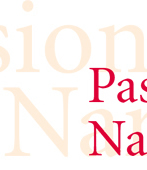
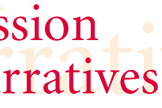


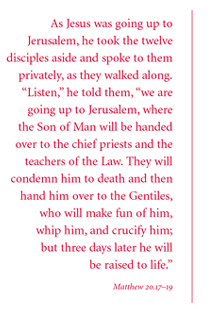
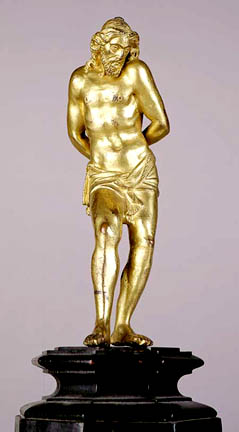 Circle
of Jacopo Sansovino (1486-1570) Circle
of Jacopo Sansovino (1486-1570)Venetian, mid-16th century Gilt bronze Narrative scenes of the Flagellation usually depict Jesus bound
to the column flanked by his tormentors. Here Sansovino has distilled
the narrative to its iconic essence reflected in the figure of Jesus.
He stands with his hands bound behind his back and his head downcast.
Jesus’ contraposto stance suggests the weight of his body leaning
against the now absent column. |
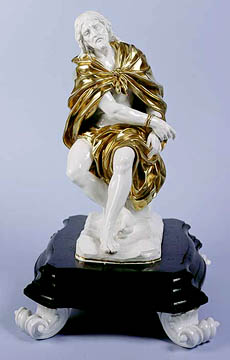 Ecce
Homo Ecce
HomoAfter a model of Giovanni Battista Foggini (1652-1725) Fired in Italy, mid-18th century (?); fire gilt in Russia, c. 1796-1801 White Doccia porcelain with later gilt over-glaze John 19.5 records that Pilate uttered the words “Ecce Homo” (Latin for “Here is the man!”) as he presented Jesus to the people. The crowd responded, “Kill him! Kill him! …Nail him to a cross!” (John 19.15) Depictions of the Ecce Homo usually illustrate Jesus wearing a purple robe his head crowned with thorns. Often, he holds a reed cross. Despite the absence of the crown of thorns in this figure, Jesus’ robe, bound wrists, posture and his look of pained resignation mark the moment just before he is sentenced to die.
|
|
This scene illustrates a key moment of the Christian story: Christ's death by crucifixion. Christ nailed to the cross stands at the center flanked by the two crucified thieves. The Virgin Mary and St. John stand on the ground to either side of Christ's cross. The unveiled Mary Magdalene kneels at the foot of the cross, her face and hands raised in anguish towards the suffering Jesus. Beneath his outstretched arms two angles holding chalices hover, waiting to catch blood from his wounds. Sol and Luna (the sun and moon) symbolizing day and night flank the crucifix in the sky. The instruments of the Passion are carved onto the frame. Clockwise from the top right they are: the the hammer used to nail Jesus to the cross; the scourges with which he was beaten; the ladder used to lift his body down from the cross; the dice used to cast lots for his cloak; the pliers used to remove the nails from his hands and feet; the nails used to anchor him to the cross; the column to which Jesus was tied and scourged; the lance used to pierce his side; and the knife used to rend his cloak. The apex of the frame are three circles inscribed with crosses, most likely depicting the Eucharistic wafer. |
|
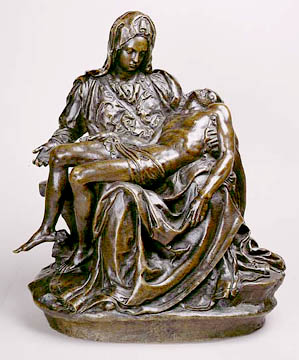 Pietà PietàAfter Michelangelo Buonarotti (1475-1564) Roman, late 16th century Bronze group The Pietà is a type of image known as the Mater Dolorosa
(Virgin of Sorrows). The Pietà (from the Italian word for
pity) illustrates the moment of profound sorrow Mary displays as
her she cradles her dead son in her arms shortly after he has been
taken down from the cross. Though not biblically based, the Pietà
has been a popular artistic subject since the later Middle Ages.
|
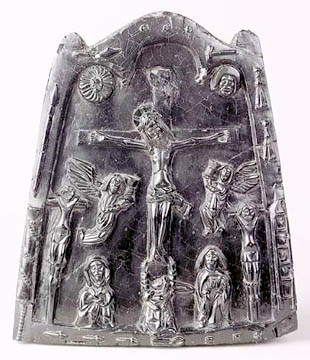 Crucifixion
Crucifixion